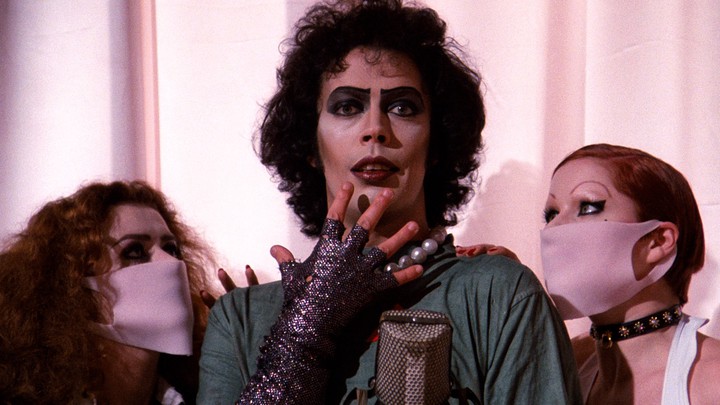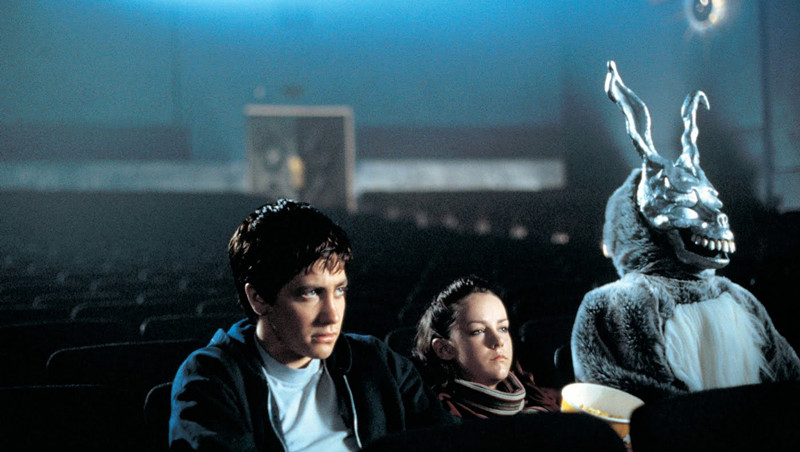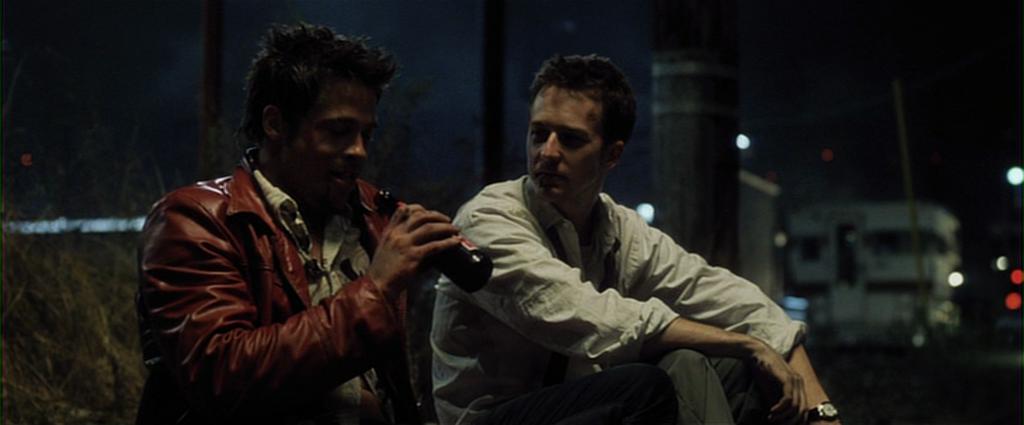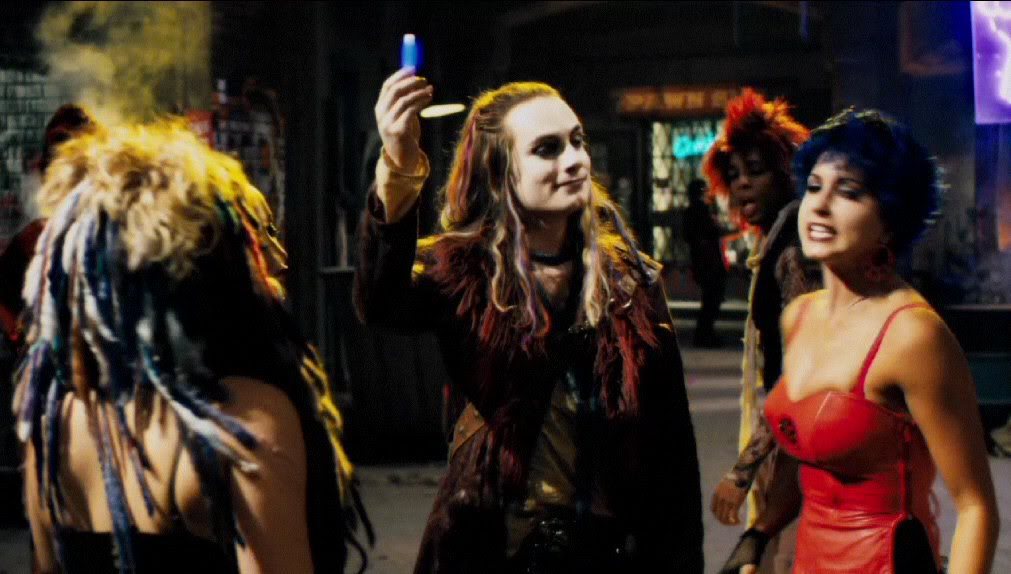The Journey of Cult Films

Cult movies are absolutely fascinating. One of the main reasons for this is that they exist in a sort of intellectual paradox where almost everyone has a sense of what they are while almost no one, academics included, can truly define what they are. Some claim that a film’s “cult status” lies in ritualistic consumption practices like those seen at screenings of “The Room” or “Rocky Horror Picture Show,” some define them as low budget films that gain notoriety, and others claim that it is a qualifier of a film’s transgressive nature. The problem with these definitions is that a cursory Google search for “list of cult films” inevitably bring up numerous exceptions to their rules. Not all cult films have ritualistic screening practices, some cult films are produced and promoted by big studios, and not every cult film necessarily transgresses any more than would be seen in a mainstream movie.
So how do we define “cult film” for the purposes of this article? In an effort to include most forms of the cult movie, our definition will be based around two broad elements present in almost every definition: 1) that the film have a long-term, on-going, and dedicated fandom and 2) that this fandom be largely acquired after initial release (after either a “flop” or under-performance). The first element is needed because without it these are just films that were not and are not popular and as such are simply forgotten cultural artifacts. The second element is needed to make the important distinction between regular film popularity and cult film popularity. For example, the “Star Wars” franchise has one of the most dedicated and long-standing fandoms of all-time, even creating a pseudo religion in Jediism, but we tend not to think of it as a series of “cult films” because of its massive popularity upon initial release. Popular movies are loved immediately, the cult movie is loved over time.

Given this definition of cult film, we can now ask ourselves why some movies exist in this odd middle-ground between hit and flop? Why do some films take time to find their audience to appreciate them and keep appreciating them in perpetuity? As you may suspect with a shape-shifting concept like cult film, there is no singular answer. Rather, this article will attempt to outline 3 main models that most cult films fall into. Before we begin, it should be noted that these models are neither complete or discrete. Some films will apply to multiple models while others may evade them completely. The purpose of this article is to outline the most common journeys of cult movies and to shed light on how these types of films come to be.
So Bad It’s Good
The first and likely most well-known of these models is the “so bad it’s good” movie, also known as “badfilm” in academic circles. In a broad sense, films that fall into this category are enjoyed because of, rather than in spite of, their poor quality. These include films like “The Room,” “Reefer Madness,” or “Plan 9 From Outer Space.” If you want to learn more about the specifics on the appeal of badfilm, there are plenty of in-depth articles and videos that go into great detail. However, broadly, the appeal of “so bad it’s good” filmmaking tends to be generated by humor derived from the ineptitude and/or a lack of awareness on display, basking in the sheer strangeness of the filmmaker’s decisions, and the social interactions that can occur between fans as they one-up or share their bad movie experiences and crack jokes or “riffs” at the film’s expense (in much the same manner as the crew from “Mystery Science Theatre 3000”). In terms of cultivating an on-going fandom, the humour and oddity aspects give viewers enjoyment while the social aspects ensure that the film spreads and garners repeat viewings.

Now that we know why these films gain popularity, we now need to investigate the multitude of reasons why these film’s gain their popularity over a long period of time rather than immediately following release. First and foremost, the sheer number of badfilm fans typically is not enough to garner a big opening weekend. For instance, consider the 2019 film “Cats.” The initial trailers for “Cats” were universally panned and, in combination with near apocalyptic pre-release reviews, all but guaranteed that much, if not most, of the theatrical audience would be there to enjoy the movie as badfilm. However, despite the wide reach of its marketing and distribution as well as the enthusiasm of badfilm fans, “Cats” still did not make back its budget during its initial run. Put simply, the majority of mainstream audiences do not want to watch a bad movie and badfilm fans, while loyal enough to maintain interest in a film, are not numerous enough to make a film a hit during its initial release.
Badfilms can also struggle during initial release due to a conflict between theatre etiquette and the common consumption of these types of movies. Badfilms thrive in rowdy environments like home viewings or midnight screenings where things like open mocking, audience participation, and vocal reactions can take place, things that would be frowned upon or even lead to a person getting kicked-out of a normal theatre setting. Therefore, it makes sense for many badfilm fans to not breach this etiquette (and potentially ruining the experiences of those watching the film unironically) and avoid participating in an initial release.
Furthermore, many if not most badfilms have incredibly low budgets that limit the reach and duration of their initial distribution. With these movies, awareness of the film happens slowly and passes person to person or through online communities. For instance, “The Room” was first picked up and disseminated by a small group of film students in the Los Angeles area in 2003 and took years to develop into an international cult hit. While this gives promotion and appreciation to films that otherwise wouldn’t have it, it acts slowly and more often than not has little effect on the success of the initial release. However, once a good badfilm makes its way through these areas and finds its audience, it can enjoy ongoing success year after year.
Good Films, Bad Advertising
The next cult movie model is the product of when a great film receives poor advertising. In this model, the appeal of the film and its ongoing fandom is generated by its quality. Films like these include “Fight Club,” “The Big Lebowski,” and “Eraserhead.” These films, apart from their appeal to audiences, often find their way into film canon, act as building blocks for future films, and often influence the direction of the mainstream.
So how can advertising sandbag the initial releases of these landmark movies? Most often, advertising problems tend to fall into an issue of a lack of advertising or incongruous advertising. Of the two, a lack of advertising is the simplest to understand in terms of how it can affect initial release interest. Put simply, if you don’t know a film exists, you can’t see it. The reasons for this can be somewhat varied be it a simple lack of advertising budget, interference by censorship groups, or by being choked out by a crowded market like John Carpenter’s “The Thing” that premiered during the same weekend that “E.T.,” “Poltergiest,” “Rocky III,” “Star Trek II: The Wrath of Khan,” “Annie,” “Firefox,” “Conan the Barbarian,” “Porky’s,” and fellow cult movie “Blade Runner” were playing.

Incongruent advertising occurs when a film’s marketing fails to match up to the actual content of the film. One of the more prominent instances of this occurred with the release of “Fight Club.” Famously, the advertising campaign (p. 253-273) portrayed it as an action movie which largely missed the tone and qualities of the film which tends much closer to dark comedy and psychological thriller. This type of incongruity negatively affects initial releases and response in two major ways. First, it fails to highlight the strengths of the film and in doing so makes the film appear to be worse than it actually is thereby scarring off potential audiences. Second, it curates the wrong kind of audience and sets the wrong kinds of expectations which leads to poor audience and critical response thereby preventing the film from gaining momentum during its initial run. This can occur because the audience feels duped by the advertising (and takes their frustration out on the film), their method of consuming the film and determining its quality does not match the film’s content (ie. we value the quality of action movies largely by action sequences, stunt work, and visual effects while the quality of dramas more so through dialogue, acting, and subtle direction choices), or they are simply in the mood for a different genre.
The reasons for incongruity in film advertising are numerous and include, but are not limited to, attempting to capitalize on an emerging market or avoid a failing market (p. 253-273), advertisers not understanding a film, or a film still being a work in progress prior to an advertising campaign. Whatever the case may be, incongruous advertising and a lack of advertising can deal a significant blow to the initial interest of a film. That said, if these types of cult films illustrate anything, it’s that great film making does not go unnoticed forever.
Sub-Cultural Significance
The third cult film model deals with sub-cultural representation in mainstream film. Put simply, not every culture or sub-set of culture is catered to equally or thoroughly in the mainstream. In fact, mainstream films tend to make at least some concessions to appeal to as wide and non-specific an audience as possible as a means of increasing profits. As a result, many of these films fail to mark themselves as landmark works of a specific sub-culture which can include ethnic-cultures, national-cultures, generic-cultures, and almost anything that can contribute to a potential viewers identity or interests.
It is this failure that allows the sub-cultural cult movie to flourish. Sub-cultural cult movies, intentionally or not, make direct appeals to specific sub-cultures in their content and in doing so can create long lasting success for a few reasons. The first is that by getting sub-culturally specific, the film inherently lowers the amount of competition it has in becoming a milestone movie. For instance, the list of films culturally competing for the label of best rock-climbing movie is far shorter and easier to penetrate than films competing for the label of best heist movie. Second, the scarcity of films within a given sub-culture often give it inherent value to that sub-culture’s members. Using the example from earlier, if you are interested in rock climbing, you are likely going to be a) interested in a rock-climbing movie and b) more willing to overlook its flaws and/or promote strengths because of the limited number of rock-climbing movies available to enjoy. Third, if the film breaks through and becomes a sub-cultural milestone, sub-cultures tend to ownership of it and ensure that it will be re-watched and shared year after year. An example of this can be seen with the film “Slap-Shot.” “Slap-Shot,” by being adopted as one of if not the best hockey movie of all-time, keeps its popularity alive as hockey fans took ownership it and continue to watch and share the movie with other hockey fans to this day.
Put simply, once a movie becomes a sub-culture’s “baby” it can stick around forever. We can see this connection with several other cult classics with other sub-cultures: “The Rocky Horror Picture Show” appeals to the musical theatre sub-culture, “Bon Cop, Bad Cop” appeals to the Canadian sub-culture, “Cannibal Holocaust” appeals to the grind-house sub-culture, etc.. In some instances, these films can even appeal to sub-cultures within a sub-culture. For instance, “Repo: The Genetic Opera,” through its odd combination of genre and style, appeals to a cross-culture of body-horror/slasher, industrial metal music, and musical theatre fans.

However, despite how beloved these films are and how they eventually gain long-term success, they miss out on initial success for a couple of reasons. The most prominent of these reasons is that, much like badfilm fans, sub-culturally specific audiences are loyal but tend not to be numerous enough to generate large opening releases (p. 189) (hence why mainstream films make concessions). Additionally, sub-culturally specific movies can often receive mediocre to poor reception from critics and general audiences. This is due to the fact that, in a way, sub-culturally specific films are telling a joke and only people outside of that sub-culture are not totally going to get it. This is also compounded by the fact that people within a sub-culture will tend to “grade on a curve” and give the benefit of the doubt when it comes to films that speak to their specific sub-culture. Sub-culturally specific films are also negatively affected by the fact that cultural and sub-cultural movement is slow, meaning that by the time a film is known and recommended by members of a sub-culture, the initial release period is over. In short, sub-cultural fame is slow-acting but can lead to significant long term success.
The “so bad its good,” good film with bad advertising, and sub-cultural significance models illustrate how a good deal of cult films come to gain appreciation after a poor or underwhelming initial release. Cult movies have been a key element of culture and should continue to well in to the future. Indeed, the emergence and proliferation of online film/culture forums/social media and increased access to films through online ordering and streaming may even expand the number of films accepted into the cult film canon. So explore the wide world of film, find a hidden gem, spread the word, and be the leader of the next cult film.
What do you think? Leave a comment.











El Topo is the epitome of a cult film that sucks.
Good heavens, yes. An absolutely dreadful movie. Avant garde for people who have no idea what avant garde is.
I think it helps if you are high when watching it. You can forget how dreadful it really is and not worry about the plot.
Rule number one of cinema: If the critics hate it there’s a good chance it’s gonna be awesome.
I learned this when reading reviews of Tron, and even today, this guy hating Big Trouble In Little China (one of the greatest movies of all time) further underlines it.
La cabina. Someone wrote about it here on this publication. Fits very well in the cult status.
Thanks for the free publicity 🙂
I think it’s a movie that is unbelievably great but seems (for reasons not apparent to its fans) to appeal only to a niche audience – and that audience is also willing to rewatch it multiple times. Combination of a small but fanatic audience, a film that holds
up to repeated viewings, and something quirky/lacking mass appeal about the film itself.
My vote? The Adventures of Buckaroo Banzai… funny, brilliant, great acting, every line is quotable, it’s aged really well, and yet some people just don’t seem to get it. At all.
Carpenter is always good too, though!
It depends. I think of Star Wars as a cult film, but it’s a huge cult and exceptionally devoted. But I suppose one definition of a cult is that it can’t be huge, otherwise it’s a religion.
I’ve always defined “cult” as a group or culture which is defined by a unique and localised system of beliefs, as in, say “cult of peer group”, where the lore of the group defies wider perspectives. That said, a cult film would be one whose attributes are not generally appealing to a mass audience, above-mentioned John Carpenter a prime example, his mastery of suspense and dynamics not appealing to the glitz loving blockbuster lovers, who are easily swayed by high production investment. My own cult favourites, I sometimes struggle to bring to mind, but they’re varied: Local Hero, Cobra Verde and Miller’s Crossing (no preference on order). What unites them is a common theme of frustrated humanity, manifested in different ways, but brilliantly articulated.
Oh yeah, the Room! Best worst film I’ve probably ever seen.
JOhnny: How was work today?
Johnny: Oh, pretty good. We got a new client and the bank will make a lot of money.
Mark: What client?
Johnny: I cannot tell you; it’s confidential.
Mark: Aw, come on. Why not?
Johnny: No, I can’t. Anyway, how is your sex life?
Remember a quote describing The Room’s lead actor, Tommy Wiseau, as having the delivery of Borat impersonating Christopher Walken playing someone with brain damage. Summat like that. He’s a bit of a Garth Marenghi: writer, director, producer, plus actor. Amazingly odd film; a total train wreck in slo-mo.
Nice to have a definition (or three) of a cult film.
Are you saying Cats will become a cult movie years down the line?
Yeah, Cats is a weird situation because it seemed destined for cult fandom before release. This vulture.com article does a pretty good job of explaining how Cats is already transitioning into cult status: https://www.vulture.com/2020/01/cats-box-office-flop-is-it-the-next-rocky-horror.html
Ha ha. It does seem like Cats has a devoted following.
I’ve wanted to see the film for quite some time, but never got around to it. Ever since it got poor reviews, I’ve wondered if it was worth it. Now, I think it probably is.
‘Popular movies are loved immediately, the cult movie is loved over time.’ It’s interesting that you mention the Star Wars franchise. There is a truly dreadful Chinese subtitled version of ‘Episode III – Revenge of the Sith’ that’s gained a cult status. It’s titled ‘Backstroke of the West’ and some of its ‘translations’ have to be seen to be believed. Anyway, my point is that a group of very dedicated fans actually redubbed the original film with the Chinglish translations. It’s both weirdly amusing and somewhat disturbing.
Thank you so much for this wonderful read! It has become a fascinating pastime to predict which movies will gain cult status over time. I had read plenty of articles declaring ‘Geostorm’ as a favourite to gain this tag by the next decade.
Princess Bride
Die Hard
Ghostbusters 1 & 2
Police Academy (initial ones)
A Knight’s Tale with Heath Ledger & Paul Bettany
The Mummy
Johnny English
Love all of these, know what’s going to happen, don’t care, just want to them again. Partner knows all the key phrases. No unnecessary swear words for ‘comedic effect’ or sex scenes.
They need action, comedy and a touch of romance, the main characters should be imperfect, but determined, the baddies well – what baddies & their henchmen are like. The plot must be completely bonkers, but perfectly reasonable in a crazy sort of way.
You can’t stop watching.
My Pick for Cult film,
The Warriors, ignored on release. But it’s the absolute best film, Soundtrack is amazing, characters are funny, imminently quotable and the best Halloween costume is that of the Baseball Furies.
Not quite: the councillors of King’s Lynn (most of whom, I suspect, had not seen it) decided it would incite gang warfare in the town, so promptly banned it. The residents of King’s Lynn, thus made aware of the existence of an apparently extraordinary movie, flocked in their droves to Wisbech and Downham Market, where the councillors were more sanguine about their townspeople (or possibly dozier).
Reminds me of film festival in a provincial English city, where some brand-new (and hence uncertificated) films were due to be screened. Cue the Licensing Committee going en masse for a screening, in order to classify the films. Unfortunately most members of the committee were quite elderly and, as was to be expected, fell asleep the moment the lights went down. They emerged blinking into the daylight, nodding sagely with the recommendations of their officers…
Many of these titles would have acquired their status not in the cinema but being watched at home, perhaps the sort of films that would lend themselves to groups of friends being together and having a right old laugh.
Soundtracks play a big part in cult movies. As does over-intellectualising. Is ‘Donnie Darko’ really smart? Or does it just make no sense and look cool? Cool soundtrack, apparently smart… but does it actually make any sense really? Drive? Looks cool, sounds cool… any good? No.
Donnie Darko makes perfect sense, but only because they accidentally stumbled into the perfectly expository song for the closing sequence (I can’t recall what the first choice song was, for which the could not secure the rights).
Do you mean the opening song when Donnie is cycling down the hill? The opening song in the original version was “The Killing Moon” by Echo & The Bunnymen. In the Director’s Cut it was changed to “Never Tear Us Apart” by INXS. Richard Kelly has said that INXS was the original choice, but they didn’t have the money to pay for the rights. “The Killing Moon” works much better though.
We, that too – Never Tear us Apart was the first choice, but they couldn’t afford it for the original release.
But a similar thing happened at the other end with “Mad World”, which was the affordable choice. But it also ended up perfect thanks to the lyric “And I find it kinda funny, and I find it kinda sad, that the dreams in which I’m dying are the best I’ve ever had”.
A cult movie is one with a cult-like following. This meant something in the days (I still fondly remember) of “midnight movies” and rep theatres. In the digital age it doesn’t mean as much. With DVDs and streaming video, every movie has a cult. It’s like going “viral.” The age of cult movies has passed. You can still call certain movies “cult movies” but it doesn’t mean the same thing because the cultural infrastructure has changed.
Troll 2, so cult they made a movie bout it 🙂
I find that a lot of cult films are ones where the idea is really interesting, but the execution or development falls flat. An example I always think of is Hellraiser, where the story idea and the designs for the film are really good, and there are a couple of really cool scenes, but the film as a whole is kind of cheesy and unsatisfying. Often with ‘cult’ films, they’re something of a curate’s egg of a film, rather than a great one, but people becomes attached to it because of the concept or the ideas, almost as if they really want to believe it’s a great film.
I think a cult classic in film is where there is substantial agreement that it is worth seeing past a film’s deliberate or accidental unconventionality to appreciate its other qualities.
Mommie Dearest comes to mind.
That’s a rather good definition that covers both terrible and brilliant ‘cult’ movies – the terrible ones often being objectively bad pieces of film making in the sense that they’re badly scripted, directed or acted and so fail to satisfy a large audience on their initial release, but have redeeming features such as one great performance, an original idea or brilliant or fun moments that mean they stick in the head and we enjoy watching them casually repeat times at home more than say a well put together blockbuster or drama which wowed in the cinema but doesn’t demand further inspection.
The good ones often couldn’t find a large audience first time around due to timing or the nature of the movie business – often offbeat dramas struggle because the only way for them to break through to the mainstream is first critical then awards recognition and savvy promotion, and its only by word-of-mouth and telly that they get their wider audience.
Cult films. Small, devoted, and overlapping with other types of fandom and thus genre.
Cult movie meant something else in the days before Video et al made things far more readily available.
If it wasn’t on TV, and many weren’t, you might hear about them through word of mouth and then one day find a cinema mad enough to show them.
1. Eraserhead
2.”the dude abides”
3. Rocky horror …etc
4. Anything by Werner Herzog… Aguirre, Fitzcarraldo, …
Great? Shite? I don’t know, but i could watch them again, and again, … and again
A cult film for me is the film few have heard of, often made outside the studio system that has amassed a respect by those looking for an alternative cinematic experience.
Something like The Big Lebowski though great and certainly loved by many is not a cult as it has major Hollywood stars, made , financed by a large studio and is widely known and often shown. An example of a Cult film for me would be Herk Harvey’s Carnival of souls 1962, a genuinely odd obscurity with many fine qualities. Or Anrzej zulawski’s brilliant Possession 1981. I also love many cult cinema titles which are by most standards shit but they are by definition “Cult”.
“An example of a Cult film for me would be Herk Harvey’s Carnival of souls 1962”
A personal favorite of mine. Fits my definition of a cult film too – a deeply flawed film that’s none-the-less artistically brilliant (or just entertainingly insane) in it’s own way. Like Carnival of Souls – I’ve watched it with my sons several times and despite the terrible acting, low budget, and overall clunkyness it’s still one of the most creepy and disturbing horror movies I’ve ever seen.
Is True Romance a cult film? I was watching it on video but switched off after the only half decent character was killed off. Sometimes Tarantino offers too much cruelty for me.
True romance absolutely is a cult film. It’s relatively poorely known despite having a cast of greats and a dynamic, albeit comic book esque story.
No. It’s in fact the opposite of a cult film in that it was financially successful and critically praised when it was released but is now largely dated and ignored. Natural Born Killers on the other hand…
Anybody else seen Cube? It’s essentially awful but it didn’t stop me watching it three times.
I absolutely adore those films. Canadian sci-fi horror at its finest.
Yes, I’m not ashamed to say I loved it too! There’s two more waiting for me to watch too.
My personal favourite cult film is the 1984 Night of the Comet, which had a great working title – Teenage Comet Zombies. Great stuff!
This is a very well-articulated and thought out article, raising several very interested points. One of which that caught my attention the most is in regards to advertising campaigns misidentifying movies. I can see how movie studios might lack the social awareness to capitalize on what’s popular at the time and subsequently misidentify their movie’s audiences. Also, (and someone jump in and correct me if I’m mistaken) I believe that most studios outsource the job of creating trailers for their films and therefore a lot of the time things like tone get lost in translation.
I think I’ll take the information you’ve highlighted in your article and apply it to one of my personal favorite cult films, The Warriors, to see where it fits into all of this: what kind of budget/advertising/studio interference it had and the sub-cultures it fits into.
One last thing: “…great film making does not go unnoticed forever,” is very quotable.
Thanks! If you use this for a future article, I look forward to reading it
The ‘so bad that it’s good’ kind of film has always been a favourite of mine. I can’t explain it, there’s just something great about BAD movies.
Any of the Jaws films after the first one match this description, in my opinion. Anaconda, too, wow that one is the good kind of bad.
A great article!
Samantha, I’m not sure if you’re a podcast fan but How Did This Get Made is a fantastic one where comedians June Diane Raphael, Paul Sheer, and Jason Mantzoukas watch terrible movies and crack jokes about them. They release a new episode every two weeks so it’s been my bimonthly ritual for years now to watch the movie and listen to the podcast. They’ve even covered not only Jaws 3 and Jaws 4, but they’ve also covered Anaconda. Not to mention about 200 other films. Highly recommend if “so bad it’s good” is your thing.
Ooh that sounds great! I might keep that one in mind!!
The worst cult movie of all time is, without a doubt, Frank Zappa’s ‘200 Motels’. It’s torture on tape.
Glorious failures and eye popping images/performances are the bread and butter of a cult film (being under the influence also helps).
A good essay. The term “cult film” I, as I suppose many, have wondered how to understand it. The film “Attack of the Killer Tomatoes,” can be added to the list.
Kudos.
A clear comprehensive writing about the good and the bad movies and it’s overall aspects whether marketing or the response. Fab writing.
Okay, first of all I’d like to say that this was a very well written article and it brings to light the sheer enormity of the “Cult Classic” category. Given that the nature of how a film becomes a bona fide “Cult Classic”, is convoluted at best, it’s safe to say that there isn’t such a thing as an “Instant Cult Classic” or is there? I don’t know the answer to that question, but what I do know is this… people don’t make movies thinking about this sort of thing. People make movie’s because… that’s what they do…they make movie’s. Yes, of course there are films that are “highly anticipated” due to either the cast, the director, the sequel, the remake, the hype or the simple fact that the studio behind a particular film, has bankrolled the marketing and advertising which drives audience’s to attend, rent, download or stream said film. I myself, have to admit that I’m not a harbinger of anything called “culture”. In fact I’m woefully inept at seeing thing’s for what they are or may become. However, with that said, I have definitely seen many movies that for whatever reason I liked very much, without ever truly deconstructing that particular film. It’s like this… remember when you were a little kid and your favorite candy bar was… I don’t know… let’s say a Kit Kat. Why a Kit Kat and not a Snickers or M&M’s..? Who knows? Maybe it was because your dad bought it for you. Maybe he suggested Kit Kat to you because he loved them too as a kid or maybe you had just never tasted ANYTHING like a Kit Kat, before that day. But then the you eat a Payday the following weekend and NOW Paydays are your fave. Who knew that Paydays were not only delicious but strangely enough, good for you too?! Alas, the very next weekend you now are in love with the not so popular Charleston Chew, but who cares what the rest of your 3rd grade classmates think…that the “Charleston Chew” is nothing but a second rate Milky Way. You love the “Charleston Chew” and that’s all you need to say. Favorite films are the same. Meaning you don’t know that you’re gonna love something until you feed it to your senses. Movies are made to explore, sample, taste, experience and enjoy….or not. Maybe later on you revisit that certain “Candy Bar” and fall in love with it all over again or not. Perhaps, it just tasted better because you were 9 year’s old and your Pops told you it was HIS fave, back in the day. Hey, at least you gave it a shot. Many times films don’t get that chance to be revisited. Over time people’s tastes, opinions and interests change and what once was your “absolute favorite” and deemed by you as “simply da best!” isn’t the same as you remember or vice versa. You can very easily “hate” a certain film or candy bar, but 20 years later…OMG! it’s like you just found out about it all over again. Movies, like candy bars are a lot like life…. it’s meant to be enjoyed by YOU and nobody but YOU. I respect that in a film fan. You do not ever have to explain why you LOVE anything, especially something that is designed as an “enjoyment” from the get go. If you love it and nobody else seems to agree with you it is only because they haven’t seen it or tasted it the way that you did. Eventually, we all run out of either time or excuses and at that point we’re open and ready for what may now be adored by millions of other “Charleston Chew” fans and then my friend you’re a freaking genius who’s ahead of his time….very much like the film….Fight Club. I had to “taste” that one again and again and again until I was like…”You know what..?”….”What?” “This Fight Club sh_t tastes f____ing GREAT!!! “You really need to try some of this sh_t” “I do?’ “Yeah you do, because this sh_t is just like a Charleston Chew…you don’t know how good it is until you taste it….some things just get better with time and that’s when you might have a “Cult Classic” on your hands.
Loved reading what you had to say about this! Your identification of the three models of cult films really resonated with me; it made a lot of movie-watching experiences make sense in retrospect. I found the part about the movie being misrepresented by its advertising particularly fascinating. It called to mind this article about the marketing for Jennifer’s Body (https://www.buzzfeednews.com/article/louispeitzman/jennifers-body-diablo-cody-karyn-kusama-feminist-horror) I read a while back that really provides a case study for exactly what you’re talking about here. Thanks for this!
You offer some really thoughtful ideas! Now with the rise of online streaming sites, I am wondering: is there a TV equivalent to cult films?
While reading this I was constantly thinking of the ironic fandom of Morbius and how we might soon come to have an unironic cult fandom of Morbheads. The thought horrifies me.